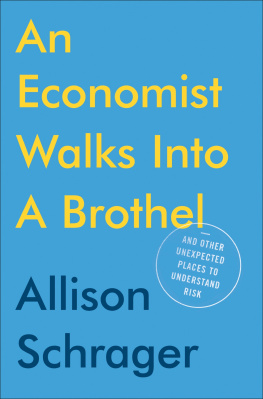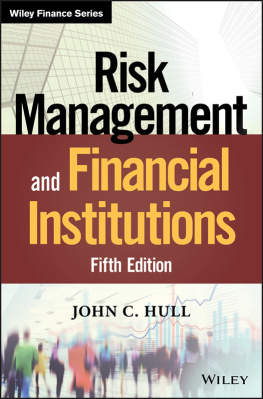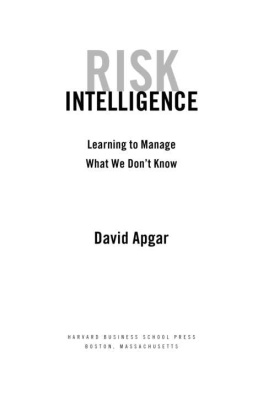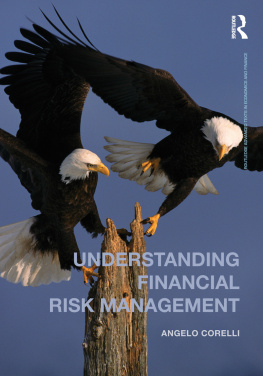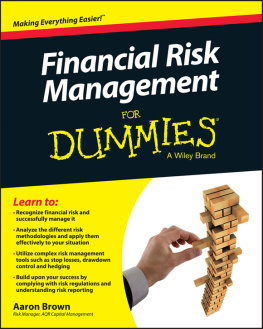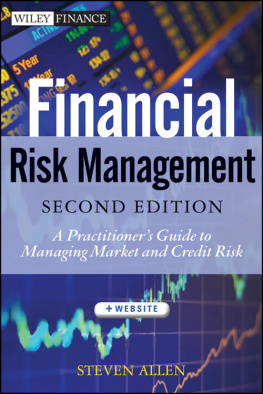GUIDE TO COUNTRY RISK
OTHER ECONOMIST BOOKS
Guide to Analysing Companies
Guide to Business Modelling
Guide to Business Planning
Guide to Cash Management
Guide to Commodities
Guide to Decision Making
Guide to Economic Indicators
Guide to Emerging Markets
Guide to the European Union
Guide to Financial Management
Guide to Financial Markets
Guide to Hedge Funds
Guide to Investment Strategy
Guide to Management Ideas and Gurus
Guide to Managing Growth
Guide to Organisation Design
Guide to Project Management
Guide to Supply Chain Management
Numbers Guide
Style Guide
Book of Business Quotations
Book of Isms
Brands and Branding
Business Consulting
Business Strategy
Buying Professional Services
The Chief Financial Officer
Economics
Managing Talent
Managing Uncertainty
Marketing
Marketing for Growth
Megachange the world in 2050
Modern Warfare, Intelligence and Deterrence
Organisation Culture
Successful Strategy Execution
Unhappy Union
Directors: an AZ Guide
Economics: an AZ Guide
Investment: an AZ Guide
Negotiation: an AZ Guide
Pocket World in Figures


The Economist in Association with Profile Books Ltd. and PublicAffairs
Copyright The Economist Newspaper Ltd, 2014
Text copyright Mina Toksz, 2014
First published in 2014 by Profile Books Ltd. in Great Britain.
Published in 2014 in the United States by PublicAffairs, a Member of the Perseus Books Group
All rights reserved.
No part of this book may be reproduced, stored in or introduced into a retrieval system, or transmitted, in any form or by any means (electronic, mechanical, photocopying, recording or otherwise), without the prior written permission of both the copyright owner and the publisher of this book, except in the case of brief quotations embodied in critical articles and reviews. For information, address PublicAffairs, 250 West 57th Street, 15th Floor, New York, NY 10107.
The greatest care has been taken in compiling this book. However, no responsibility can be accepted by the publishers or compilers for the accuracy of the information presented.
Where opinion is expressed it is that of the author and does not necessarily coincide with the editorial views of The Economist Newspaper.
While every effort has been made to contact copyright-holders of material produced or cited in this book, in the case of those it has not been possible to contact successfully, the author and publishers will be glad to make amendments in further editions. PublicAffairs books are available at special discounts for bulk purchases in the U.S. by corporations, institutions, and other organizations. For more information, please contact the Special Markets Department at the Perseus Books Group, 2300 Chestnut Street, Suite 200, Philadelphia, PA 19103, call (800) 8104145, ext. 5000, or e-mail special..
Typeset in EcoType by MacGuru Ltd
Library of Congress Control Number: 2014949753
ISBN 9781-610394871 (EB)
First Edition
10 9 8 7 6 5 4 3 2 1
Contents
List of case studies
List of figures
List of tables
THE IDEA FOR THIS BOOK was hatched following a lecture I gave on country risk at Manchester Business School in 2011, at the height of the euro-zone sovereign debt crisis. I would like to thank Ismail Erturk, director of the MSc Executive Management programme on banking and financial services, who noted that there was not much written on the topic. I took up this suggestion when I left Standard Bank in 2013, having been head of the country risk team for international operations since 2001. The enthusiasm of colleagues and friends then propelled me along. From Standard Bank, I am grateful to Nina Triantis, global head of telecoms, John OMulloy, managing director, Jiri Choteborsky, director telecoms and media, and Sophie Papasavva, now a founding member of EFMC Loan Syndicates LLP, for their support and input to the Roshan and Wataniya case studies. I would like especially to thank Laura Rattner, my long-term colleague now heading the western hemisphere country risk team at Macquarie Group, Deborah Bekker at Standard Bank, Alistair Newton, managing director at Nomura International, and Helena Huang at Chatham House for their contributions to excellent case studies on Argentina, Nigeria, North Korea and China respectively.
I began working on country risk early in my professional career as editorial director of the Economist Intelligence Units Country Risk Service in the late 1980s. But I would not have been in a position to write a book on this topic without the rich experience gained through working for a unique emerging-markets bank, Standard Bank, which was expanding its reach globally in the remarkable decade of the 2000s. It would not be possible to list everyone, but people who made my work more enjoyable include Neil Holden, a mathematical wizard, and Arnold Gain, with whom we set up the overall framework for country risk, and Santiago Assalini and Annerie Cornelissen, who provided the steely nerves and support during the challenging days of the 200809 crisis.
I am also grateful to Daniel Franklin, executive director at The Economist, for introducing me to Profile Books where Paul Lewis encouraged me to take up big themes and Penny Williams tidied up the material so nicely. The big themes idea led me to the discovery of a wonderful book, Against the Gods, by Peter Bernstein, which matched my own thinking on risk: yes, there are many risks out there in this complex world, but humanity has the ability to manage most of them. This is what this book is about. This is the message I would like to give my daughter, Ozan, as well as thanking her for telling me to stop procrastinating when my attention was flagging. And last but not least, I want to thank my partner, Bernhard Blauel, for the long years of support that allowed me to focus on my work.
Mina Toksz
August 2014
Country risk what can go wrong when business is conducted across borders can affect any company, any time, anywhere. Its importance must be understood not just by bankers, insurers and other corporate risk managers but by anyone with commercial interests abroad. Whether you are running a factory, investing in a pension fund, or just importing or exporting, it can be perilous to ignore what is going on in overseas markets. As the Arab spring political events in 2011 and the global financial crisis in 200809 demonstrated, upheaval in one country can send powerful shock waves far beyond its borders.
Major payments crises occur with alarming regularity. A decade before the banking and sovereign (or public) debt crisis of the southern euro-zone economies, there was a debt default in Argentina in 2001; Turkey had a banking and payments crisis in 2000; Russia defaulted in 1998, a year after the Asian financial crisis, which itself followed a series of defaults in Latin America and Africa in the early 1980s. Further back, there were big defaults in the inter-war years and during the first era of globalisation in the 19th century.
There are always economic and political shocks happening somewhere in the world with the potential to spread. In 2013, the focus of concern was emerging markets and how they would fare if the US Federal Reserve tightened monetary policy. In 2014, it seemed that the Fed was not going to tighten much for some time and the focus moved to a potential bubble brewing in the US corporate bond market. In the past few years, risk managers could fret about the consequences of Cypruss banking collapse, Syrias civil war, the wobbles in the Chinese financial sector, the Ukraine crisis and the global or regional impact of possible international sanctions on Russia. The impact of such faraway events is easily transmitted through financial, banking and trade flows to all corners of the world economy. There are also upside risks to factor in, such as the lessening of sovereign default risks in the euro zone over 2013, which also need managing.
Next page

